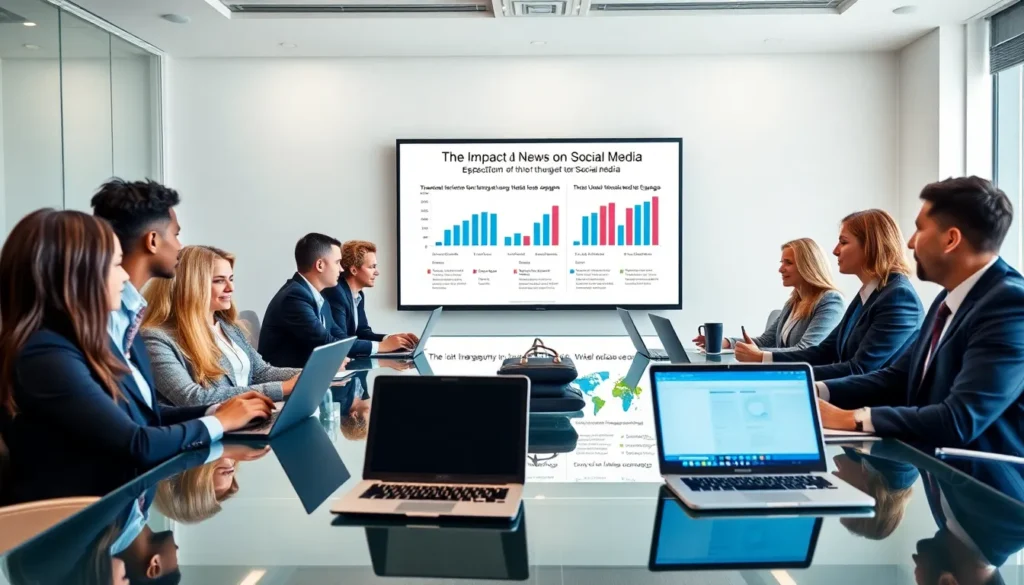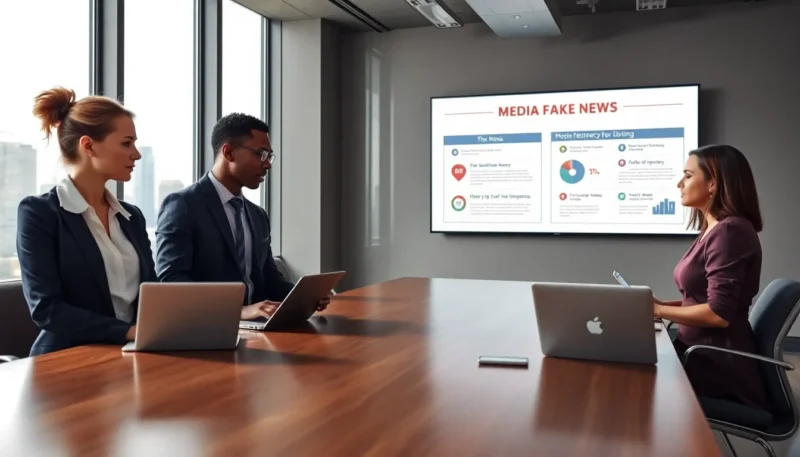
In today’s world, scrolling through social media can be more shocking than watching reality TV. With a mix of cat memes and questionable headlines, the line between fact and fiction blurs faster than a double shot espresso. Fake news has infiltrated our feeds, creating chaos in how information is disseminated and consumed. In this essay, we will explore the effects of fake news on social media, diving into its implications for public opinion, psychological impacts, and potential solutions. Buckle up, it’s going to be a bumpy ride through misinformation.
Effect of Fake News on Social Media Essay

Definition And Characteristics
Fake news refers to misinformation presented as news, intending to mislead or influence readers. Its characteristics usually include sensational headlines, emotional language, and a lack of credible sources. Often, it masquerades as legitimate news, convincing readers of its authenticity even when it’s an outright fabrication. In a world where everyone is vying for attention, fake news thrives on its ability to engage users, sometimes leaning into parody or satire, but rarely delivering truthful content.
Types Of Fake News
Understanding the different types of fake news can help users dissect the information they encounter. Broadly, we can classify fake news into categories such as:
- Fabricated Content: Completely false information created to deceive.
- Manipulated Content: Genuine information altered to mislead.
- Satire or Parody: Humorous pieces not meant to be taken seriously but sometimes misinterpreted as factual.
- False Connection: Headlines or visuals that don’t accurately relate to the content.
Each type requires a discerning eye to identify and combat effectively.
The Spread Of Fake News On Social Media
Mechanisms Of Dissemination
Social media platforms function as an echo chamber, amplifying messages through shares and retweets, leading to rapid dissemination of fake news. Algorithms prioritize engagement, often favoring sensational content that garners more clicks. As users interact with such content, they unwittingly contribute to the spread, making it increasingly pervasive.
Role Of Algorithms And Bots
Algorithms play a dual role: they can help surface quality content but often boost engagement-driven posts instead. Bots, automated accounts mimicking human behavior, further complicate the landscape. They can generate thousands of tweets or posts in minutes, perpetuating misinformation at a pace humans can’t match. As a result, distinguishing between credible news and fabricated drivel becomes a Herculean task.
Impact On Public Opinion
Polarization And Misinformation
The relationship between fake news and public opinion is complex and often volatile. Misinformation can lead to polarization, driving wedges between individuals with differing perspectives. As people consume news that aligns with their beliefs, they reinforce their viewpoint while dismissing contradicting evidence. This confirmation bias can distort worldviews, making meaningful discourse challenging.
Influence On Social Movements
Fake news doesn’t just shape opinions: it can spark social movements, for better or worse. Misinformed campaigns have mobilized individuals for various causes, illustrating the power of misleading narratives to drive action. But, the reliability of such movements rests on shaky ground, born from fabrications rather than facts.
Psychological Effects On Users
Cognitive Dissonance And Confirmation Bias
Users frequently experience cognitive dissonance when confronted with information that challenges their existing beliefs. This internal conflict often leads people to double down on their views rather than reevaluate them, feeding into cycles of misinformation. Confirmation bias rears its head, causing individuals to seek out stories that affirm their stances while disregarding opposing arguments. This makes engagement with diverse viewpoints a significant challenge.
Emotional Responses And Behavioral Changes
Besides, exposure to fake news can evoke strong emotional responses, ranging from fear to outrage. Such reactions can lead to behavioral changes, influencing how individuals interact within their social circles or engage politically. In extreme cases, misinformation can incite real-world violence, showcasing the serious repercussions of unchecked fake news.
Countermeasures And Solutions
Education And Digital Literacy
Combating fake news begins with education. Digital literacy programs can empower individuals to critically assess the information they encounter online. By teaching users how to verify sources and recognize signs of misinformation, society can build a more informed populace.
Regulatory Approaches And Responsibility
Social media companies must also take responsibility. Implementing stricter regulations around the spread of misinformation and promoting fact-checking initiatives could drastically reduce the prevalence of fake news. Collaboration with journalism schools and independent fact-checkers could foster a culture of accountability in the media landscape.












